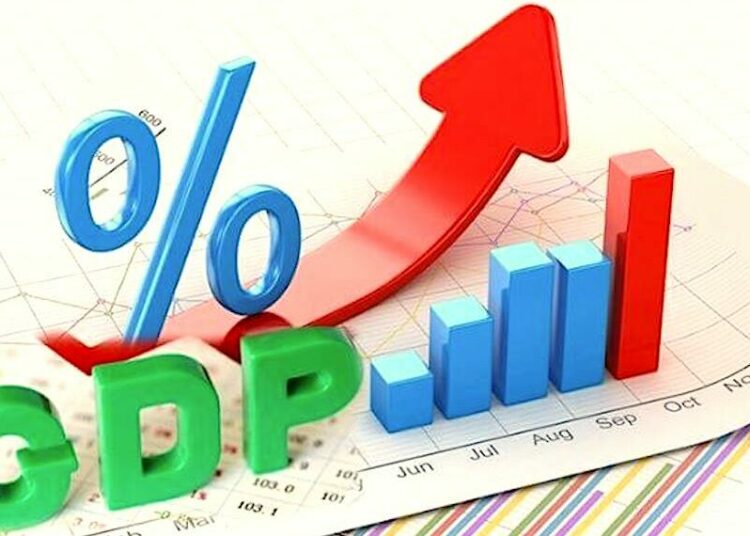Nigeria’s economy has fallen below all projections to land on a landscape of negative growth despite aggressive fiscal and monetary intervention reforms of the past and present administration at the central and sub-national levels.
Government-owned National Bureau of Statistics (NBS) released data on the nation’s economy yesterday which showed that the Gross Domestic Product (GDP) grew negatively in 2023 against various projections. “On an annual basis, GDP grew by 2.74 per cent in 2023 relative to 3.10 per cent in 2022,” the NBS said yesterday.
Former President Muhammadu Buhari’s abysmal management of nation’s economy, rising inflation rate and disruptions to the supply chain largely orchestrated by insecurity, and nationwide hardship trailing fuel subsidy removal by the present administration of President Bola Tinubu since taking over office on May 29 may have combined to bring the economy to unenviable level.
The country’s full-year GDP growth is lower compared to the World Bank and International Monetary Fund (IMF) projection
The IMF and World Bank had projected Nigeria’s economic growth rate to decline from 3.3 per cent in 2022 to 2.9 per cent in 2023. The federal government had also projected the economy to grow to 3.5 per cent during 2023 with implementation of some macroeconomic stabilisation reforms that were driven by the previous administration.
However, the economy grew by 3.46 percent (year-on-year) in real terms in the fourth quarter of 2023.
The growth rate is however lower than the 3.52 per cent recorded in the fourth quarter of 2022 and higher than the third quarter of 2023 growth of 2.54 per cent.
The statistics bureau claims that the performance of the GDP in the fourth quarter of 2023 was driven mainly by the services sector, which recorded a growth of 3.98 per cent and contributed 56.55 per cent to the aggregate GDP. The agriculture sector also grew by 2.10 per cent, from the growth of 2.05 per cent recorded in the fourth quarter of 2022.
The growth of the industry sector was 3.86 per cent, an improvement from -0.94 per cent recorded in the fourth quarter of 2022. In terms of share of the GDP, industry, and the services sectors contributed more to the aggregate GDP in the fourth quarter of 2023 compared to the fourth quarter of 2022. On an annual basis, GDP grew by 2.74 per cent in 2023 relative to 3.10 percent in 2022.
In the quarter under review, aggregate GDP stood at N65,908,258.59 million in nominal terms according to the NBS figure. The performance is higher when compared to the fourth quarter of 2022 which recorded aggregate GDP of N56,757,889.95 million, indicating a year-on-year nominal growth of 16.12 per cent.
The Nigerian economy has been classified broadly into the oil and non-oil sectors.
According to the NBS figure that was released yesterday, real growth of the oil sector was 12.11 per cent (year-on-year) in Q4 2023, indicating an increase of 25.50 per cent points relative to the rate recorded in the corresponding quarter of 2022 (-13.38 percent). Growth also increased by 12.96 per cent points when compared to Q3 2023 which was –0.85 per cent. The Oil sector contributed 4.70 per cent to the total real GDP in Q4 2023, up from the figure recorded in the corresponding period of 2022 and down from the preceding quarter, where it contributed 4.34 percent and 5.48 per cent respectively.
Conversely, the non-oil sector contributed 95.30 percent to the nation’s GDP in the fourth quarter of 2023, lower than the share recorded in the fourth quarter of 2022 which was 95.66 percent and higher than the third quarter of 2023 recorded as 94.52 per cent.
Mining and quarrying sector, which plays a major role in the nation’s economic output grew by 8.04 per cent (year-on-year) in the fourth quarter of 2023. Compared to the same quarter of 2022 and the third quarter of 2023, it was higher by 19.43 percent points and higher by 10.01 percent points respectively. Quarter-on-quarter, the growth rate recorded was -2.38 percent during the quarter.
Annual growth of the sector in 2023 was -2.84 percent, higher than -18.16 percent in 2022. The contribution of Mining and Quarrying to Real GDP in the quarter under review stood at 4.91 percent, higher than the rate of 4.71 percent recorded in the corresponding quarter of 2022 and lower than the 5.64 percent recorded in the third quarter of 2023.











